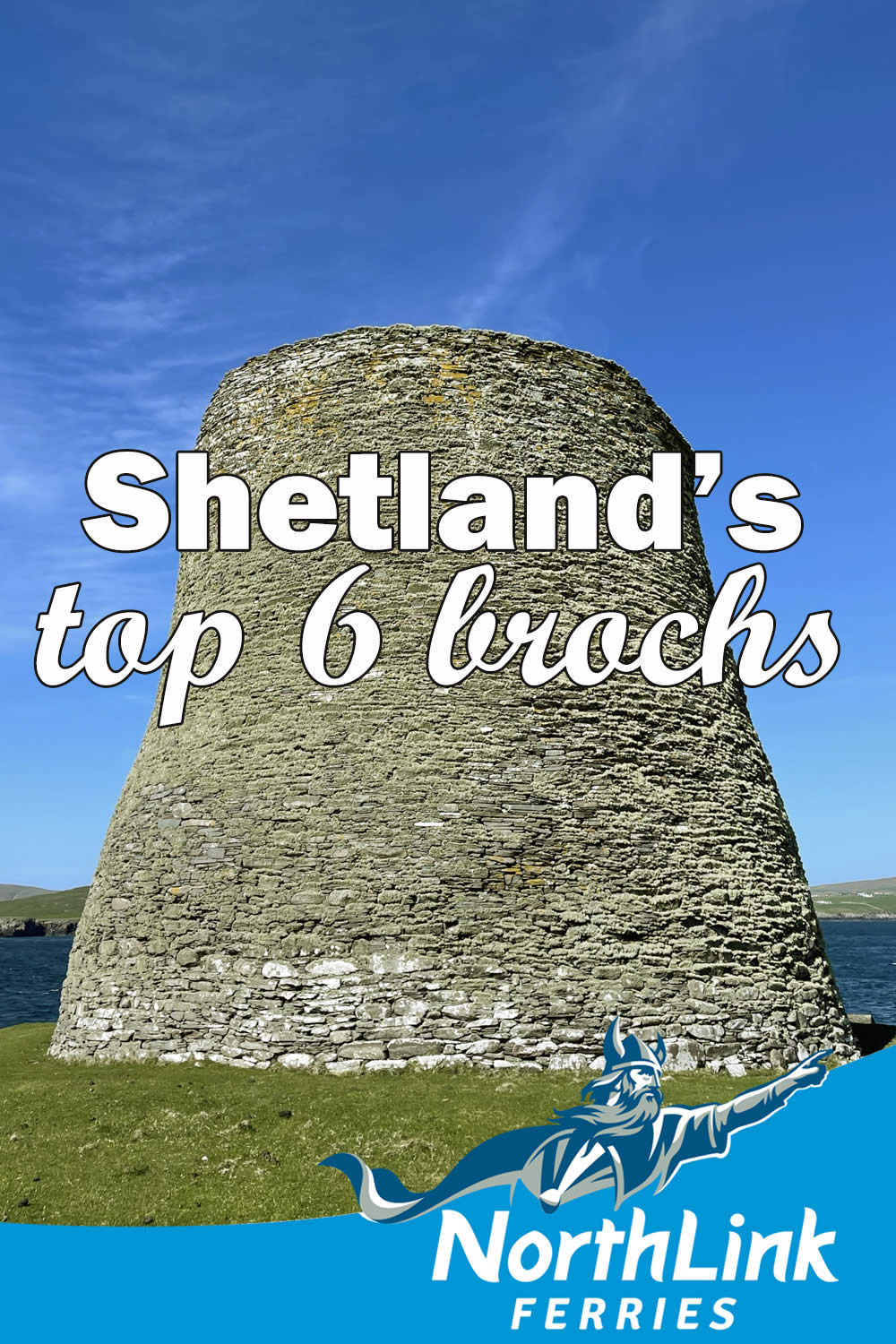Shetland’s top 6 brochs
Brochs remain synonymous with the north of Scotland; enigmatic, mysterious and intriguing. They continue to inspire and conjure questions about how past people lived. Shetland is one of the best places to explore these towers of the Iron Age.
Culswick Broch stands like a glowing red beacon that glints in the sun, on the highest point of the headland, with views across to the island of Foula. The broch structure is constructed from local red granite, giving it a warm and welcoming feel.
Remaining in many forms, from the almost complete example at Mousa, towering 13 metres from the ground, to those that remain as no more than scattered stones strewn on hillsides and cliff edges or as points on the OS, these drystone structures, built 2,000 years ago, are found scattered across the islands.
This blog will explore a few of the best in Shetland.
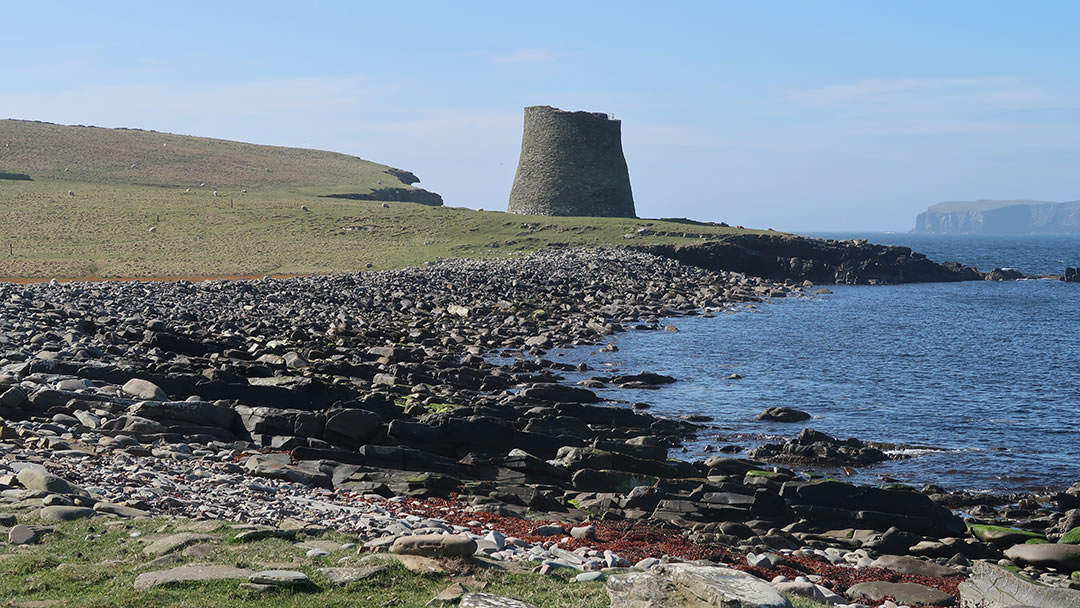
1. Mousa Broch, South Mainland – best-preserved, and most complete broch in the world
Dominating the now-uninhabited island of Mousa, the 13-metre high tower of Mousa Broch appears on the landscape like a great cooling tower from an industrial power station, with a stone staircase rising to the top of the structure and imposing views across the South Mainland towards Sumburgh Head, the dizzying heights at the top of the broch are one of the best places to enjoy a view. Mousa is the best-preserved example of a broch anywhere in Scotland, and it is no exaggeration to say that this is the best broch in the world.
Not only did the Mousa Broch stand sentry on the island side of the Mousa Sound, but another broch, a mirror image of Mousa, stood across the water at Burland. Burland Broch now stands in ruin, and most of the stones have been taken from the site to build the surrounding crofting township at Burland—an imposing sight these would have made to anyone passing through Mousa Sound.
Mousa lies off the east coast of Shetland, accessible during the summer months by boat trip operated by The Mousa Boat.
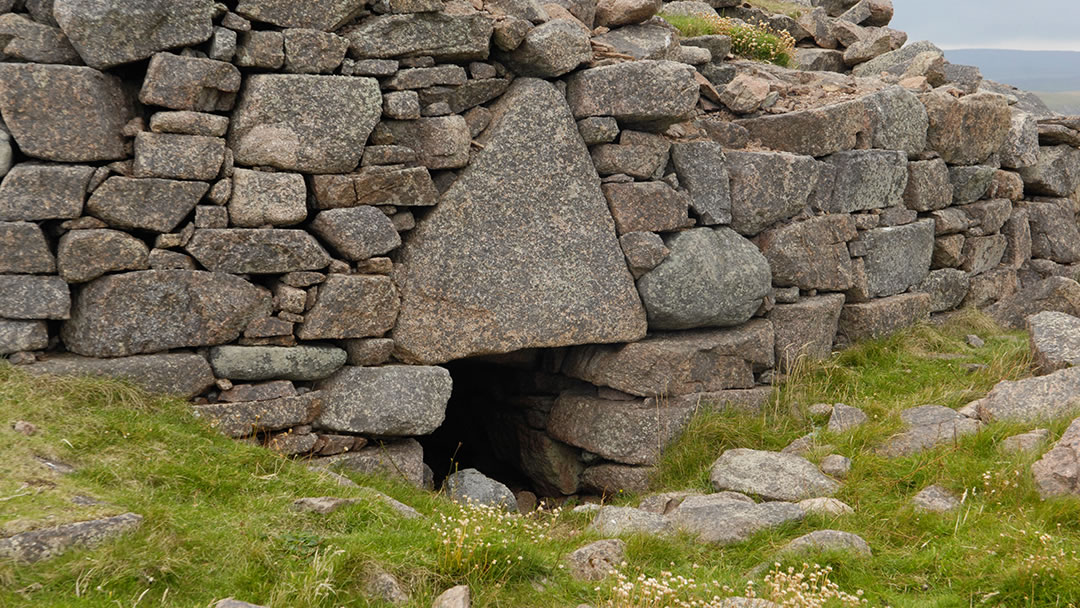
2. Culswick Broch, West Mainland – best for drama with rich, red granite stonework
Standing on a remote headland in the heart of Shetland’s West Mainland is Culswick Broch. The walk out to the broch (pictured at the top of page) from the quiet settlement of Culswick, set in a deep valley, takes visitors over open moorland and breathtaking coastal stretches punctuated by sheer cliffs and stacks, passing the ruined remains of Sotersta, where past generations worked the land, eking out a meagre existence.
The broch stands like a glowing red beacon that glints in the sun, on the highest point of the headland, with views across to the island of Foula. The broch structure is constructed from local red granite, giving it a warm and welcoming feel, and the views across the West Mainland provide the perfect backdrop to a picnic after the one-and-a-half-mile walk.
The walk to the broch offers the opportunity to look out for moorland birds, including skylarks, lapwings, oystercatchers and curlews. Towards the coast, fulmars ride the updraughts and shags, and other seabirds can be seen.
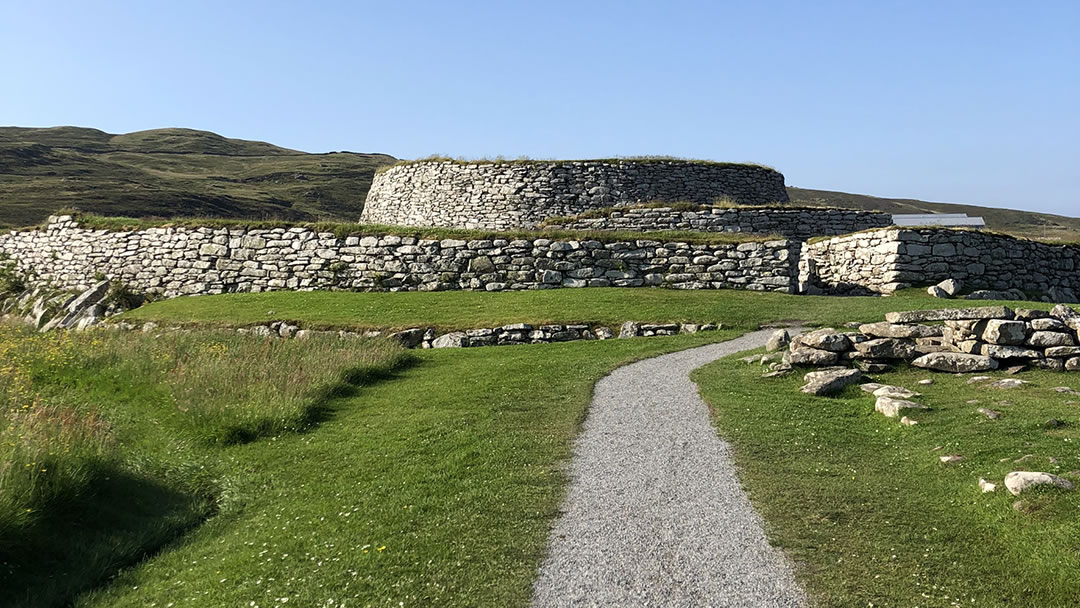
3. Clickimin Broch, Lerwick – the most accessible broch, found in the heart of town
Clickimin is the most accessible of Shetland’s brochs – other than, perhaps, the half-broch on offer at Jarlshof – and sits in the centre of town, straddling the side of Clickimin Loch.
Somewhat an enigma, Clickimin is not all it seems. The broch itself was rebuilt from rubble by local antiquarians in the late-19th century, modelling it on what they supposed it would have looked like when it stood 2,000 years ago. However, it still offers a tantalising glimpse into the past. The oldest parts of the site date to the Late Bronze Age, where a farmstead can still be seen in the area surrounding the broch.
The broch looks typically broch-like; it has a double wall made of drystone and a later wheelhouse added inside the main structure.
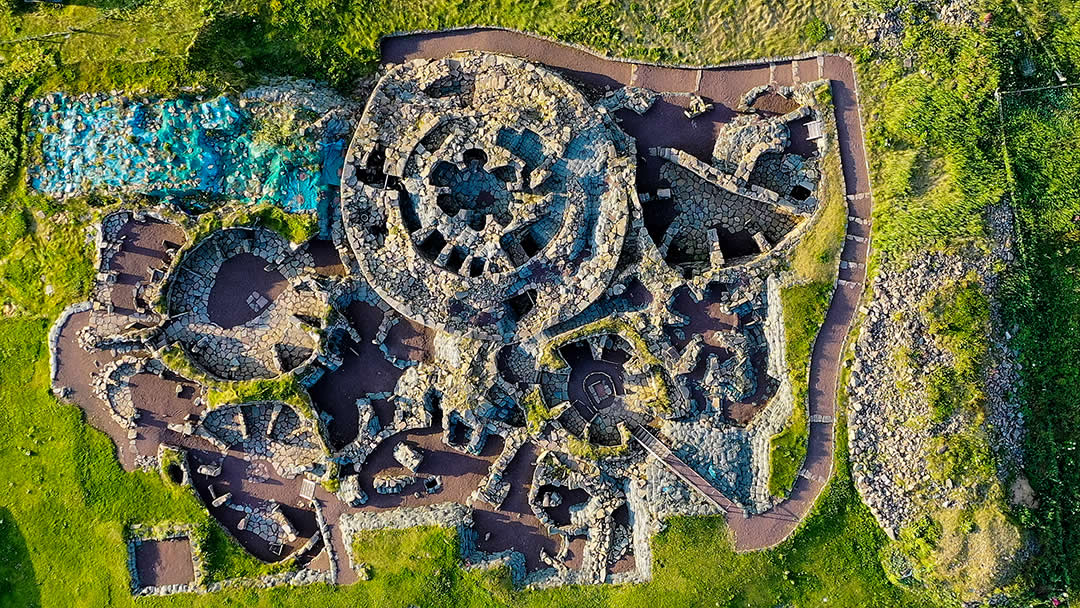
4. Scatness Broch, South Mainland – the best excavated site, with surrounding Iron Age village
Scatness, unlike most of the brochs featured here, which are quiet, secluded and without the trappings of a visitor centre, is an archaeological site managed by Shetland Amenity Trust and offers guided tours interpreting the site and wider Iron Age throughout the summer.
Old Scatness, like Culswick, has an impressive triangular-shaped lintel stone that stands above the entry door, and like Clickimin – but very few, if any others – has two entrances. Generally speaking, brochs had only one door and no windows, suggesting that these were defensive or protective buildings.
The site is fascinating, with reconstructed roundhouses giving a real sense of what life might have looked like in Iron Age Shetland. Excavations at Scatness have changed how archaeologists consider the broader broch period in Shetland and beyond, with Radiocarbon dating pushing the period of broch building back to 400 BC.
The exciting thing about these early dates is that it may suggest, albeit tentatively, that broch building began in the north and was adopted to south and western areas of Scotland from Shetland. We have a modern-day tendency to view places like Shetland and Orkney as remote, yet archaeological evidence continues to question this assumption that these were remote outposts.
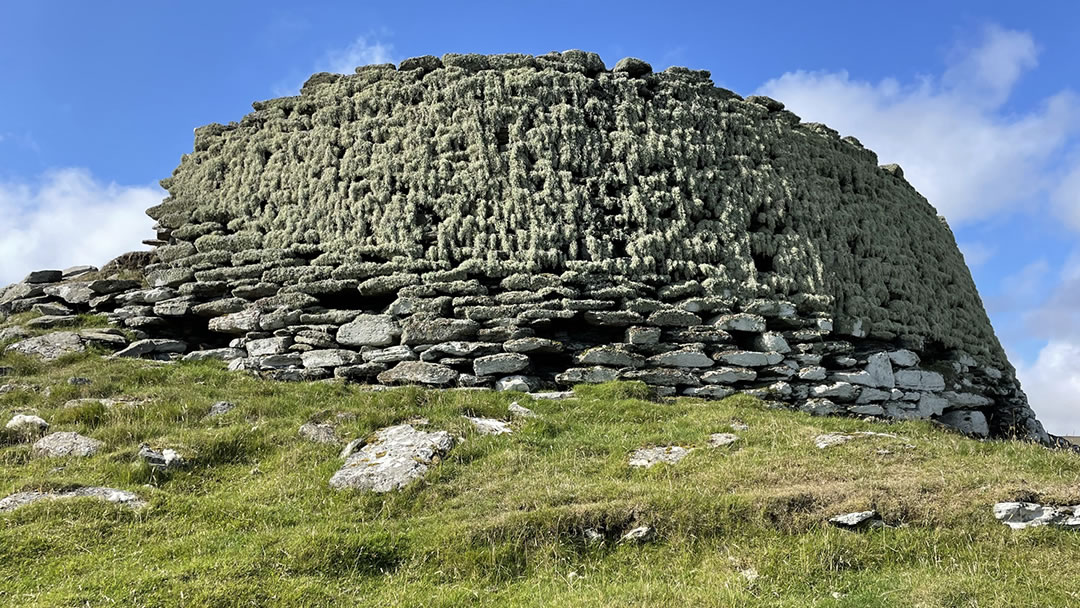
5. Burraness Broch, Yell – best for absolute, uninterrupted peace, tranquillity and views
Burraness Broch is a real treat; if you crave solitude, this one is for you. Burraness represents another ruined broch, unexcavated and collapsed. This is another quiet, often unexplored part of Shetland, and the one-and-a-half-mile walk out to the broch from North Sandwick – close to where the ferry to Unst and Fetlar leaves from – takes in stunning coastlines and two sandy beaches, with fantastic views across to the island of Fetlar.
The broch appears more dominating from the seaward side, where the walls still stand several metres high. Ramparts punctuate the area to the back of the broch.
This walk is about 3 miles and will take around 2 hours. There are fences to cross, and it’s best to bring an OS map.
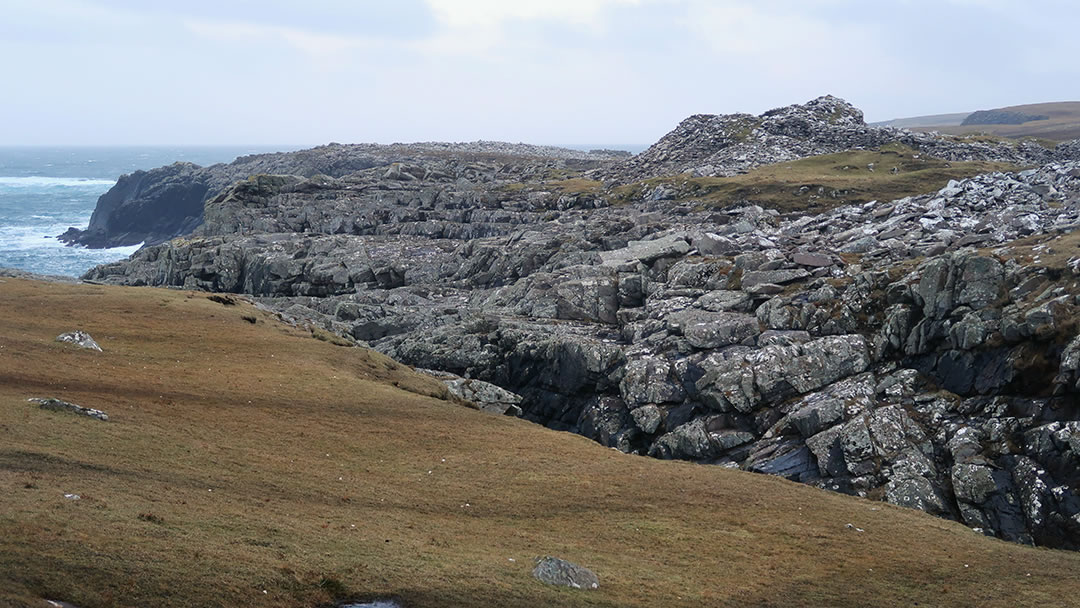
6. Levenwick Broch, South Mainland – best lesser-explored broch, with fantastic coastline along the way
Levenwick Broch is lesser-explored, almost forgotten amongst the big hitters, including Mousa, Old Scatness and Clickimin, yet, this is hand’s down, one of the best brochs to visit.
Precariously perched on the edge of the cliffs, commanding views eastwards across the North Sea, south towards Sumburgh Head and north towards Sandwick and Mousa, the broch demands respect. Set within an otherwise gentle landscape, the broch is flanked by sheer cliffs to seaward, and the houses of Levenwick strung out along the lower reaches of the steep, imposing slopes above.
The walk itself involves crossing fences and is around 2 miles. To find the broch, park responsibly at the end of Willal Road (before Levenwick beach) and follow the coastline south.
 By Laurie Goodlad
By Laurie GoodladBorn and raised in Shetland, Laurie loves the unique history and culture there so much that she started her own tour company offering visitors the chance to see the isles through the eyes of an islander. Find out more at www.shetlandwithlaurie.com
Pin it!